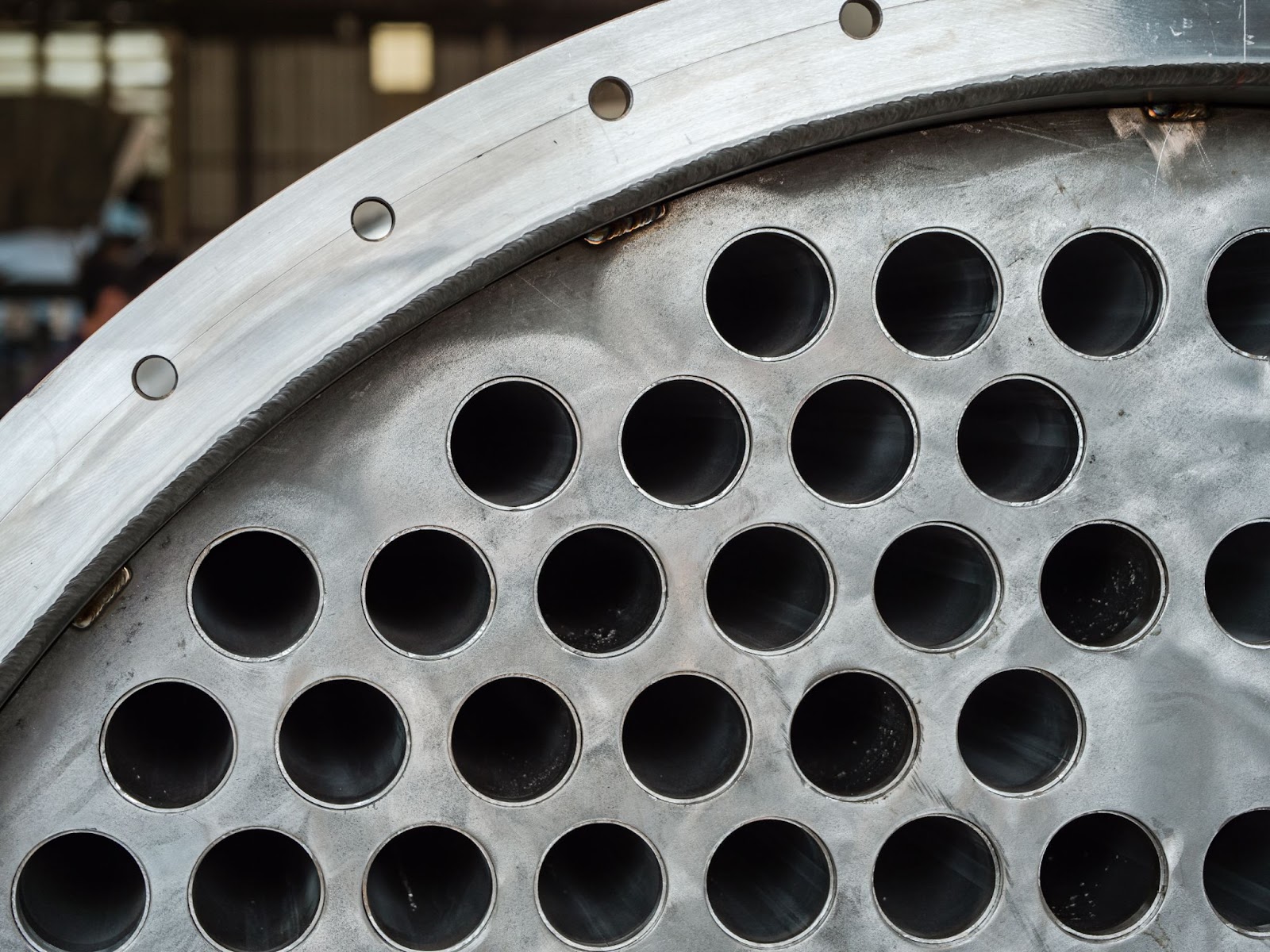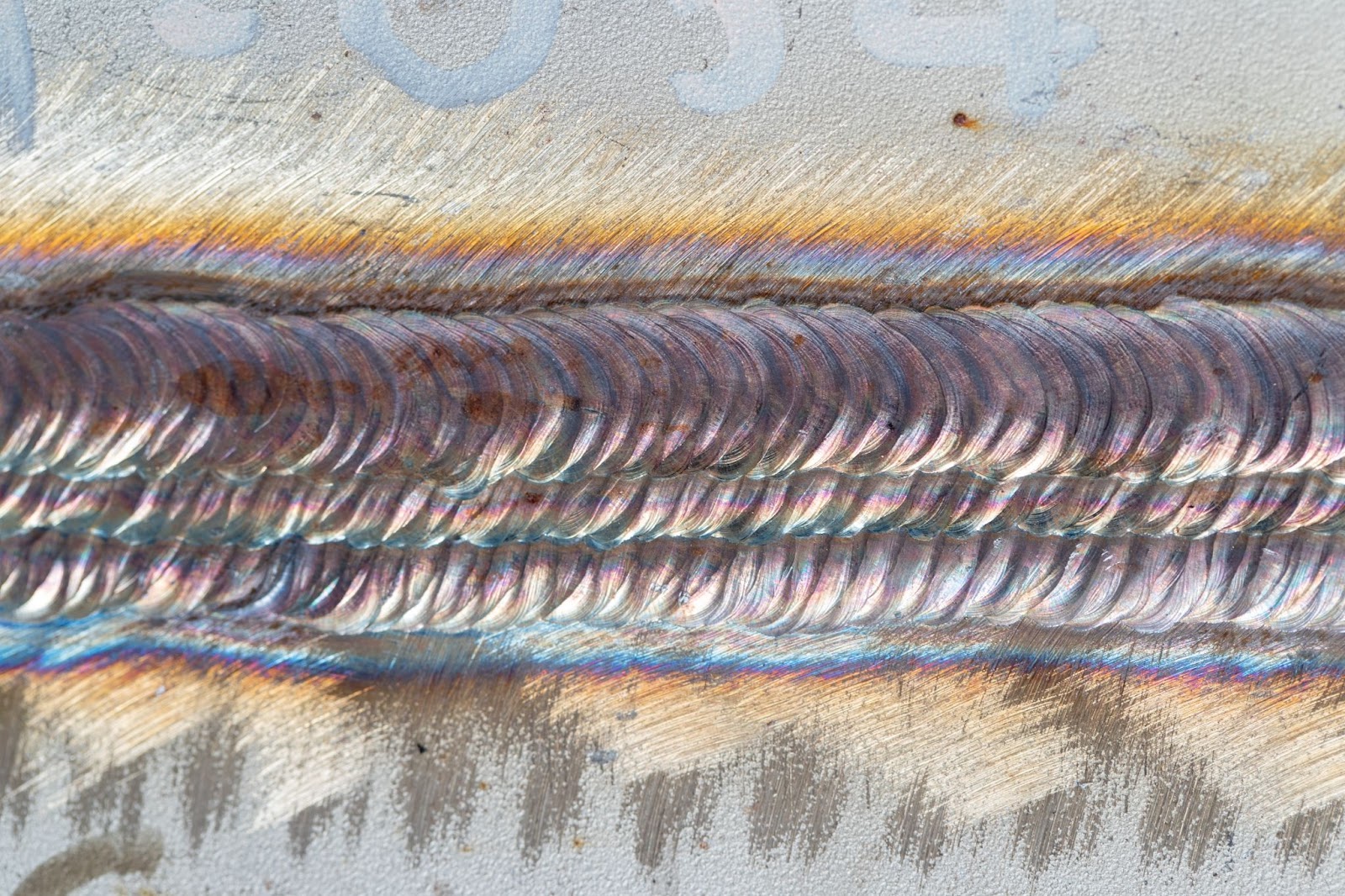Time to read: 5 min
Steel is an alloy composed primarily of iron and carbon that’s rigid and sturdy, so it’s used for heavy-duty applications like infrastructure, industrial equipment, and tooling for CNC machining. Unalloyed iron is soft and has limited uses, but the addition of carbon makes a much stronger and harder material.
Stainless steel (SS) is an alloy that contains at least 10% chromium by weight. Just as carbon strengthens iron, the addition of chromium increases steel’s toughness, hardness, and corrosion resistance. There are many grades of stainless steel, but two of the most popular are type 316 and type 304. Read on to learn more about each grade and tips on selecting one for your next project!
Pro-tip: The chromium in stainless steel is what makes it resistant to corrosion — the chromium on the surface reacts with oxygen to form a passive chromium oxide layer that protects the base metal from corrosion.

Austenitic stainless steels are non-magnetic and the most commonly utilized type of stainless steel. This family of stainless steels are called austenitic because the have a very tough and ductile face-centered cubic structure. Austenitic stainless steels are alloyed with chromium and nickel and typically have lower levels of carbon. The chromium helps to improve the corrosion/oxidation resistance and the nickel stabilizes the austenitic face-centered cubic structure.
These types of stainless steels are stronger at higher temperatures for longer times than ferritic (body-centered cubic) steels, which makes them easy to weld and form. But austenitic stainless steels cannot be hardened through heat treatment. Some examples of austenitic stainless steel grades are: 304, 309, 314, 316, 321, and 330.
304 Stainless Steel – Tried & True General Purpose
304 (S30400) is an austenitic chromium nickel stainless steel touted to be the general purpose stainless steel. It is considered to be a lean austenitic alloy, which is the most common type of stainless steel in production. Lean alloys are those with less than 20% chromium and 14% nickel, and the leaner the alloy, the less stable the austenitic structure. A lean austenitic alloy will harden to martensite (which has a brittle tetragonal structure) when it’s deformed.
304 stainless steel has a lower carbon content that reduces the risk of sensitization — aka the precipitation of carbides at the grain boundaries that causes susceptibility to intergranular corrosion. This lower carbon content also reduces carbide precipitation in the heat-affected zone during welding. There are many varieties of low carbon 304, including: 304 drawing, 304 extra drawing, and 304L tubing.
304 Stainless Steel exhibits the following characteristics:
- Increased corrosion resistance (vs 302 stainless steel)
- Weldable
- Formable
- Accepts finishes easily
- High ductility
- Excellent drawing capabilities
Common 304 Stainless Steel applications:
- Food industry tables and equipment
- Cookware and silverware
- Medical tools and equipment
- Residential and commercial building equipment like doors and bathroom stalls
- Plumbing
- Car moldings and trim
- Electrical enclosures

316 Stainless Steel – Ultra-Corrosion-Resistant
316 stainless steel is also austenitic. The most distinguishing compositional shift between 304 and 316 stainless steel is the addition of molybdenum — which increases 316’s corrosion resistance, but not its oxidation resistance. 316 is often referred to as marine grade or surgical grade stainless steel, and was developed to provide a more corrosion resistant alternative to 304 stainless steel. 316 is considered to be a more stable, lean alloy because increased nickel concentration allows the material to retain its austenitic microstructure.
316 stainless steel is slightly susceptible to sensitisation, but the low carbon version, 316L, isn’t, and is even considered immune to sensitisation. This immunity makes 316L well suited for applications with heavy guage welded components because of the decreased likelihood of carbide precipitation at the heat affected zone. The lower carbon concentration also means 316 stainless steel retains its toughness at higher temperatures. There are several different grades of 316 stainless steel, including: 316L, 316Ti, 316H, 316N, and 316LN.
316 Stainless Steel exhibits the following characteristics:
- Excellent corrosion resistance (except to warm chlorides) vs 304
- Good oxidation resistance to elevated temperatures
- Excellent weldability
- Machinable, but increased toughness wears tooling faster
- Lower tensile strength vs 304
316 SS Common Applications
- Surgical equipment, implants and tools
- Heat exchangers
- Chemical processing equipment like tanks and heaters
- Marine equipment like boat railing, ladders
- Exterior electrical enclosures
304 vs 316 Quick Comparison
304 and 316 SS are typically interchangeable for most common applications. Both provide good heat resistance, abrasion resistance and corrosion resistance. Neither grade of stainless steel are rustproof, although they are both considered to be corrosion resistant — 316 SS can generally withstand more corrosive environments than 304 SS. Due to the lower carbon percentage, 316 has a slightly better weldability, and 316 performs slightly better at elevated temperatures.
316 stainless steel is typically more expensive than 304 because of its increased nickel content and the addition of molybdenum. You can expect to pay about 1.6 times more for 316 vs 304 SS. At the time of publication, a sheet of 6”x6”x1/4” 304 SS costs $28.55 while the same size sheet of 316 SS costs $46.72.
Composition of 304 vs 316 Stainless Steel
Typical composition of 316 stainless steel vs 304 stainless steel:
| Alloy | %C | %N | %Cr | %Ni | %Mo | %Mn | %Si | %S | %P | %Cu | %Fe |
| 304 | 0.05 | 0.05 | 18.3 | 8.1 | 0.3 | 1.8 | 0.45 | 0.001 | 0.03 | 0.3 | Balance |
| 316 | 0.02 | 0.0 | 16.4 | 10.5 | 2.1 | 1.8 | 0.50 | 0.0010 | 0.03 | 0.4 | Balance |
Mechanical Properties of 304 vs 316 Stainless Steel
Typical mechanical properties of 304 stainless steel vs 316 stainless steel:
| Alloy | Density
(
lb
in3
)
| Ultimate Tensile Strength (PSI) | Modulus of Elasticity (KSI) | Rockwell B Hardness | Linear Coefficient of Thermal Expansion ( µin in(℉) ) | Solidus Temp (℉) |
| 304 | 0.289 | 73200 | 28000 | 70 | 9.61 | 2550 |
| 316 | 0.289 | 84100 | 27992 | 79 | 9 | 2500 |
As you can see, 304 and 316 stainless steel alloys are great choices for a variety of applications, and hopefully you now have a better understanding of when to use them. A good rule of thumb for material selection is to start with a review of the various 304 vs 316 properties, so bookmark this page for future reference!
Sourcing Simplified – Start Your Next Project With Fictiv
Whether you’re looking for 304, 316 or any other type of stainless steel, Fictiv can get the material you need — and our CNC machining service can create your parts in as little as 2 days!
Fictiv is your operating system for custom manufacturing that makes part procurement faster, easier, and more efficient. In other words, Fictiv lets engineers, like you, engineer. Create an account and upload your part to see what our instant quote process, design for manufacturability feedback, and intelligent platform can do for you.








